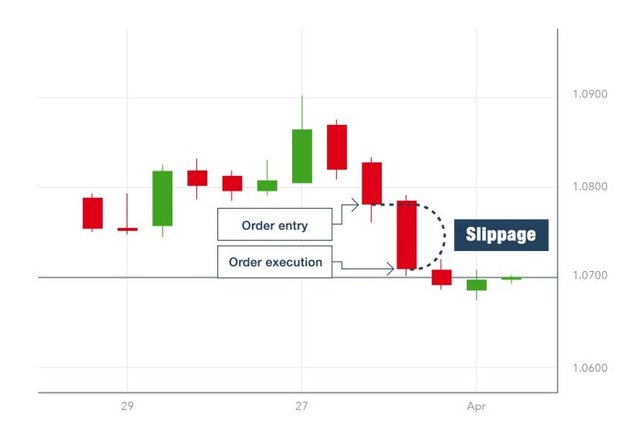How crypto market fluctuations influence slippage rates

Introduction
In the financial markets, slippage refers to the difference between the expected price of a transaction and the actual price or execution price of the transaction, in other words, slippage is a change or difference in the price of an asset or financial instrument at the time of generating a buy/sell order.
In other words, the slippage is the actual price of that asset or financial instrument at the time the order is executed, it is stated that slippage can occur at any time, but it is more frequent during periods of higher volatility, specifically when market orders are executed.
Any asset or financial instrument tends to experience at certain times a low volume of purchase/sale transactions, a situation that often leads to frequent slippage.

These events occur, since at the moment an investor or trader places a large order when there is not enough volume at the chosen price, there will automatically be a price slippage, basically due to the impossibility of the market to maintain the buy/sell price that has been selected.
Positive slippage
It is said that the slippage is positive when the result of the expected price and the executed price IS favorable for the investor or trader, it is important to emphasize that positive slippage can develop in different scenarios, for example, if when placing a buy order the execution order is placed at a lower price, or when placing a sell order the execution order is defined at a higher price.
Example of positive slippage
An investor or trader wants to BUY Steem, chooses to use POLONIEX and trade the STEEM/USDT pair, placing a buy order at $0.61 and due to low market volume, the order takes time to execute, however, after half an hour the order is executed at $0.59, so the investor or trader has obtained a positive slippage at the rate of $0.61 - $0.59 = $0.02./div>




Negative slippage
Based on the above, in the negative slippage occurs the opposite of the positive slippage, in short, when the result of the expected price and the executed price is NOT favorable for the investor or trader, it is important to emphasize that negative slippage can develop in different scenarios, for example, if when placing a buy order the execution order is set at a higher price, or when placing a sell order the execution order is set at a lower price.
Example of negative slippage
An investor or trader wants to BUY Steem, chooses to use POLONIEX and trade the STEEM/USDT pair, by placing a buy order at $0.61 and due to the low market volume, the order takes time to execute, however, after half an hour the order is executed for $0.63, so the investor or trader has obtained a negative slippage at the rate of $0.63 - $0.61 = $0.02.
To close, it is important to highlight that knowing the types of slippage allows us to be more cautious when opening or closing operations, mainly because it is important to understand that in order to place buy/sell orders and avoid negative slippage, the most advisable thing to do before trading is to first know the data inherent to market fluctuations.

SOURCES CONSULTED
➊ Timothy Koch Slippage and the choice of market or limit orders in futures trading. Link

OBSERVATION:
The cover image was designed by the author: @lupafilotaxia, incorporating image: Source: Investmentu

